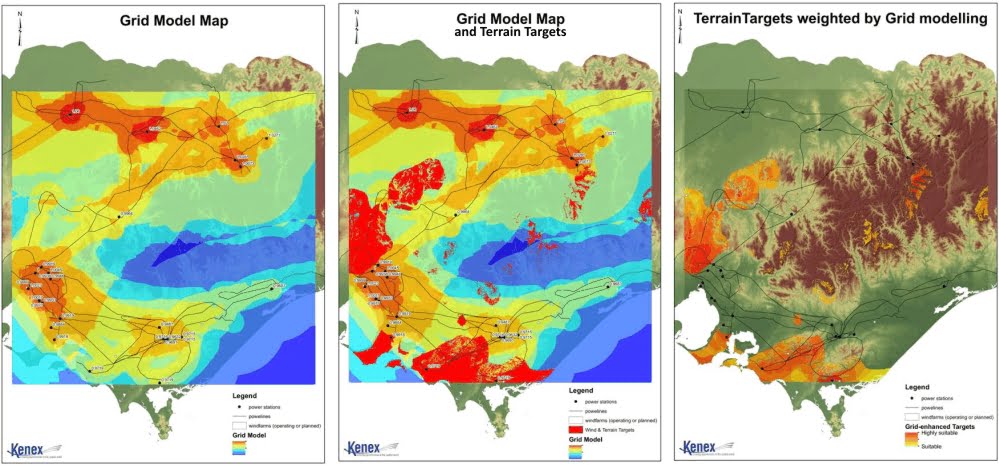Australia Wind Prospecting
Australia Wind and Grid Prospecting
Wind farm development in Australia is a significant part of the renewable energy mix, with more than 50 wind farms operating in the country and generating more than the 20% of total renewable energy supply. Nevertheless, there is still significant potential for further investments. Due to the nature of the industry it is important to identify the optimal sites and give them priority for development, in order to get the best return for investment and the most energy out of this renewable resource.
As a first step to finding ideal wind farm sites in Australia, Kenex has developed preliminary wind prospecting models for several areas, including regions in Queensland, New South Wales, and Victoria. The models were based on the fuzzy logic modelling technique already successfully applied in wind prospecting in New Zealand. However, they differ greatly from the New Zealand models in scale, spatial variables chosen, and weighting of each variable, due to the considerably different terrain and cultural considerations in Australia. While still using the same principal spatial variables that influence wind farm siting (e.g. wind speed, slope, and land use), in countries like Australia, where the topography is not as an influential factor for building a wind farm, other parameters become more important for the success of a project and therefore need to be considered in a prospecting model.
The principal parameter in making a wind project economic in Australia is gaining a good connection with the transmission grid. For this reason Kenex, with the help of Aurecon experts, have developed a transmission grid model and integrated it in our wind prospecting system. Kenex has developed a preliminary transmission grid model in Victoria and New South Wales. The main challenge of this task has been creating a GIS database of transmission lines, substations, generators, and loads from the available data. We have compiled a highly accurate East Australia transmission network database using information from the Australia Energy Market Operator (AEMO) and verified most lines and station locations using aerial photography.

Identifying powerstations on Google Earth.
The second step was to identify which spatial parameters are important for gaining a good connection. With the help of grid connection experts, we created new predictive maps based on proximity, density, and marginal loss factor for transmission lines and stations. Marginal loss is a parameter representing the increase or decrease in energy loss that that would occur in response to an incremental change in generator output or load demand. The three maps were weighted and combined into a single fuzzy logic model and the results were used to rank the existing wind and terrain targets in order to prioritise the areas which are most advantageous for connecting to the transmission grid.

Ranking the terrain and wind targets using the grid model.
The transmission grid model has proved to be a successful addition to the wind prospecting system, improving the efficacy of Kenex wind modelling and its capacity for adapting to terrain, social, and energy constraints of different countries. This allows us to successfully apply it anywhere in the world, especially where we can collaborate with local wind experts who know the requirements of the country energy market, as shown also with our Argentina wind projects.
Learn more about this project
Presentations:
- Energy in the wind: integrating the transmission network for a better approach to wind farm prospecting
- Predicting the wind: Wind Farm prospecting using GIS
Marketing material:
